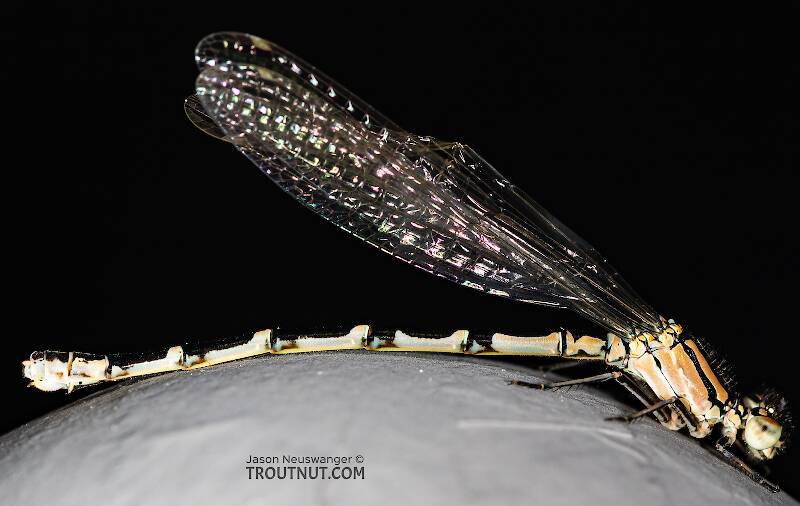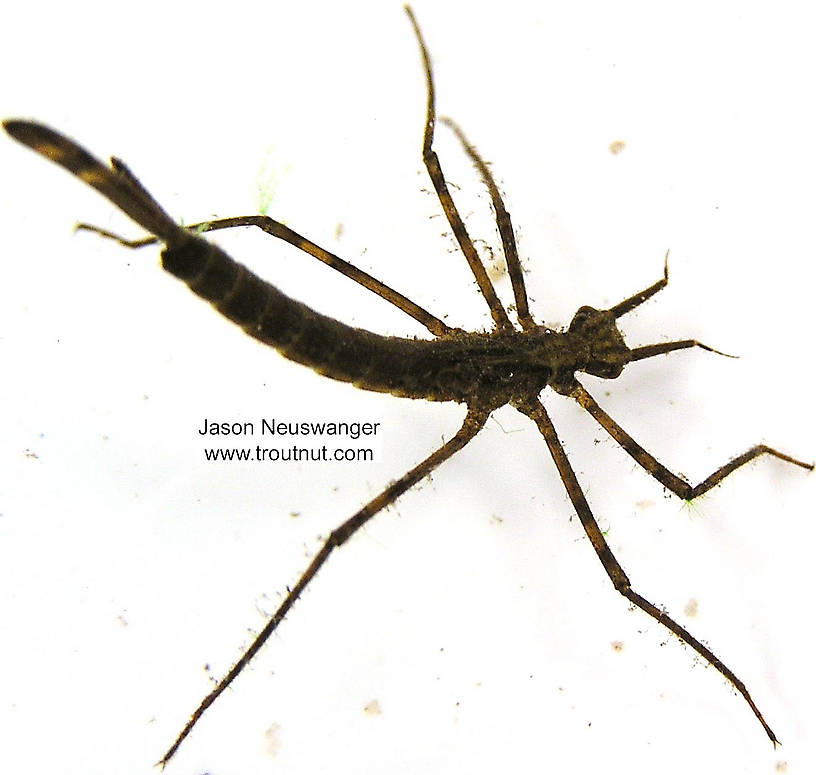
Blue-winged Olives
Baetis
Tiny Baetis mayflies are perhaps the most commonly encountered and imitated by anglers on all American trout streams due to their great abundance, widespread distribution, and trout-friendly emergence habits.
Featured on the forum

This specimen appears to be of the same species as this one collected in the same spot two months earlier. The identification of both is tentative. This one suffered some physical damage before being photographed, too, so the colors aren't totally natural. I was mostly photographing it to test out some new camera setting idea, which worked really well for a couple of closeups.

Troutnut is a project started in 2003 by salmonid ecologist Jason "Troutnut" Neuswanger to help anglers and
fly tyers unabashedly embrace the entomological side of the sport. Learn more about Troutnut or
support the project for an enhanced experience here.
Damselflies
Damselflies mirror the closely related dragonflies (scientifically, they are different suborders of the order Odonata) in that the adults are excellent at flight and only the nymphs are likely to fall prey to trout. Their nymphs differ in the way they look, move, and respirate, but they share the same alpha predator status in the world of aquatic insects.
This common name refers to only one order. Click its scientific name to learn more.
Insect Order Odonata-Zygoptera
These are pretty much always called Damselflies.
Beautiful damselflies are a priceless part of a trout stream's aesthetics, but they matter little to our flyboxes. The adults are too good at flying to end up in the water where the trout can reach them very often, but their nymphs are welcome prey at times.
Damselflies and dragonflies are in the same order, Odonata, but they are taxonomically separated on an obscure level not built into this site, the suborder. Damselflies are in the suborder Zygoptera, the scientific name by which they're most known. None of that will help you catch trout, but it explains what the hyphen in this page's title is all about.
Biologically, damselflies are similar to dragonflies (Odonata-Anisoptera) in most of the ways that matter to the angler.
Damselflies and dragonflies are in the same order, Odonata, but they are taxonomically separated on an obscure level not built into this site, the suborder. Damselflies are in the suborder Zygoptera, the scientific name by which they're most known. None of that will help you catch trout, but it explains what the hyphen in this page's title is all about.
Biologically, damselflies are similar to dragonflies (Odonata-Anisoptera) in most of the ways that matter to the angler.
See 6 more specimens...



